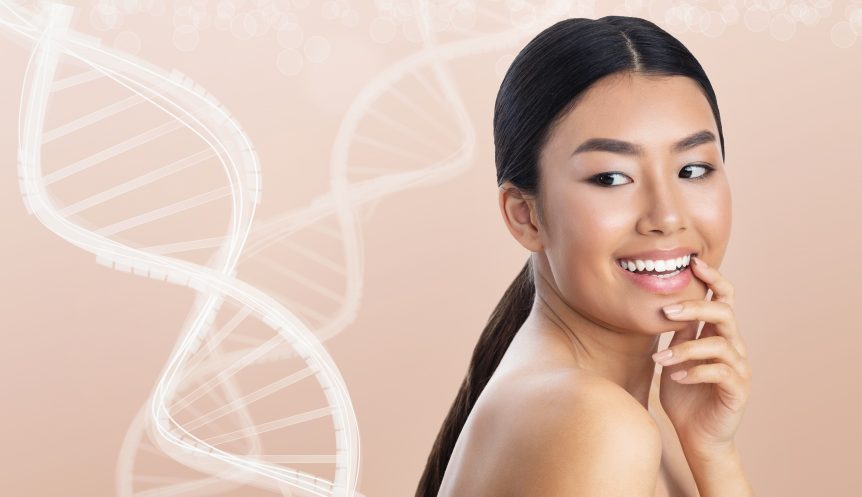Many of you know Dr. Jack Ward and I have had a Lifestyle Medicine practice on Line Avenue in our fair city of Shreveport since 1999. As baby boomers, we were attracted to the anti-aging movement. We organized and wrote a business plan, thus pairO’docs Bio-Rejuvenis — our anti-aging practice — was born. Curious about the name pairO’docs Bio-Rejuvenis?
pairO’docs: two doctors who practice paradoxically, meaning that we listen and are laser-focused on getting to the root cause of diseases and/or disorders.
Bio-Rejuvenis: the science of maintaining a youthful life.
In the last two to three years, we have tailored treatments for our patients using our 10 Tenets of Optimal Health. As I write this article on stem cells, I am channeling Tenet #2, Brain Health. Brain Health encompasses two facets: love your brain (learn something new every day) and feed your brain. Stem cell technology is my current “learn something new every day” subject.
What Are Stem Cells?
The human body is made up of hundreds of different types of cells that fulfill specific functions and are responsible for keeping our bodies functioning every day. Among these are the stem cells, which are the suppliers of all new cells (more of themselves and other types of cells). They are also responsible for the regeneration of tissues, thus maintaining a healthy body. Stem cells work by their ability to communicate with other stem cells via exosomes. Exosomes are extracellular (outside the cell) vesicles that have information in the form of messenger RNA. Simply put, stem cells seek out inflammation and damaged tissue and repair or regenerate it.
By the time we reach 30, we have lost the majority of our stem cell activity. By age 60 (I’m 62 years young), the stem cells in our bodies show very little activity, and by 70 we demonstrate almost no stem cell activity at all. Bottom line, the cells get tired and their function declines, so repair and healing becomes difficult. The well-respected New England Journal of Medicine has stated that the number one indicator of wellness is directly correlated with the number of adult stem cells in the bloodstream.
How Can Stem Cells Improve My Health and Wellness?
I must admit that when stem cells came onto my radar, it was solely in the realm of treating injuries and chronic pain. Just before the novel Coronavirus pandemic issued in the country’s “lockdown,” one of my colleagues in the greater New Orleans area sat down with both Dr. Jack and me for a discussion on stem cells. My head was spinning — in a good way — with all of the possibilities as we discussed how stem cells could contribute to improvements in all these areas:
Orthopedic and Sports Injuries
Autoimmune Diseases
Chronic Inflammatory Diseases
Anti-aging
Aesthetic/Cosmetic/Beauty
Sexual Wellness
Can Stem Cells Reverse the Appearance of Aging?
When it comes to stem cell therapy supporting the concept of anti-aging, a comprehensive definition of aging is needed. First of all, it is not exclusive to skin, although skin is the largest organ of the body. Think of aging as what happens to our bodies over time. Some aging is caused by the body and its natural process. Other aging accumulates over time, like skin damage caused by sun exposure. As a result, aging is a combination of bodily changes and the impact on how we take care of ourselves.
Aging occurs on multiple levels:
Cellular Aging
Hormonal Aging
Accumulated Damage
Metabolic Aging
The documented anti-aging and aesthetic benefits of stem cell treatments include enhancing the appearance of aging skin and contributing to hair restoration. This is the latest method to reverse the signs of aging by eliminating fine lines, wrinkles and uneven skin tone, resulting in a naturally youthful and rejuvenated look.
What are Stem Cell Treatments Like?
Typically, stem cell procedures involve a series of intramuscular injections or through the intravenous (into a vein) route.
Who Has Benefitted From the Use of Stem Cell Treatments?
There are many individuals who have incorporated stem cell therapies and have done well. We may not know them personally but I’m sure you’ve heard of them: Peyton Manning, Kobe Bryant, Rafael Nadal, Alex Rodriguez, and Tiger Woods (rumored). These are all talented and high-performance athletes who have utilized stem cell therapy for sports injuries.
I’m sure you’re familiar with the father and son duo of Ozzy Osbourne and Jack Osborne. Father Ozzy utilized stem cell therapy with his diagnosis of Parkinson’s Disease. Son Jack has utilized the therapy to mitigate symptoms relating to Multiple Sclerosis. Film and television personalities include Christopher Reeves, Robin Roberts (Good Morning America), Kim Kardashian, and Tarek El Moussa (HGTV’s Flip or Flop). And former Governor of Texas Rick Perry has not only received stem cell treatments but has advocated for adult stem cell research — even urging the Texas Medical Board to consider enhancing the state’s position on adult stem cell research.
What’s different about these individuals? Like a lot of us, they are committed to their careers and are dedicated to excellence, including health and wellness. However, what separates them from some of us is their financial health. In other words, they have the means to embrace a medical science that typically is not affordable for the masses. Because of cost and the progressive nature of stem cell therapies, celebrities commonly undergo the procedure through injections performed outside of the United States.
What Do Stem Cell Treatments Cost?
Many factors influence the cost, but this therapy can range anywhere from $5,000 to $50,000. Wow! Why so expensive? Here is the short answer. The stem cell field is still highly specialized and has not been adopted by the mainstream and insurance companies. A more complete answer speaks to the fact that the field is restricted by older laws in the United States. There is an availability and production cost issue. With reference to availability, I am referring to availability of stem cells, labs to process them, and reputable clinics to provide service (most are outside of the United States).
Is There a More Affordable Stem Cell Treatment?
What if YOU could enjoy the benefits of stem cell technology with the same safe and effective benefits of stem cell injections at a fraction of the cost and have access within the United States? Well, let me inform you of some curated and evidence-based information on a stem cell delivery system that does not involve injections. There is a patented phototherapy patch (the size of a quarter) designed to elevate peptide GHK-Cu, a copper peptide in our bodies known to enhance stem cell activity. Given the abundant benefits of stem cell technology, it’s worth mentioning them again:
Reduction of Inflammation
Support of Wound Healing
Reduction in the Appearance of Scars
Improved Skin Appearance (increase collagen production)
Dramatic Anti-Aging (on a cellular level)
Enhanced Energy and Vitality
Significant Improvement in Sports Performance and Faster Exercise Recovery
Attention to Mental Clarity
Better Sleep
Pain Relief
I recently learned of a patented phototherapy stem cell patch that has been backed by multiple clinical studies and 20 years of development. In the last several months, I did my due diligence in using the patch by wearing it 12 hours on and 12 hours off. My results revolved around rapid wound healing (significant right heel abrasion) with minimal scarring. Additionally, as recorded with my Oura ring and app, my sleep quality has improved, specifically deep sleep (Stage 3) and REM sleep (Stage 4).
This progressive science of stem cells is one I want to share with everyone in search of living a lifestyle of wellness unlike any other. For more details on how to get this patented phototherapy stem cell patch, I welcome you to schedule a discovery call with me: www.DrKarenOnCall.com.
DISCLAIMER:
All of the information found in this article is based on the opinion of the author Karen M. Pendleton, M.D. The information is meant to motivate readers to make their own health decisions after consulting with their own health care providers. All readers should consult a doctor before making a health change, especially those that are related to a specific diagnosis or health condition. No information in this article should be relied on in determining a diet, making a medical diagnosis or determining a treatment for a medical condition. The information in this article is not intended to replace a relationship with a qualified healthcare practitioner and is not intended as medical advice. No information in this article should be used to diagnose, treat, prevent, or cure any disease or condition.








